I would use the minted package as mentioned from the developer Konrad Rudolph instead of the listing package. Here is why:
listing package
The listing package does not support colors by default. To use colors you would need to include the color package and define color-rules by yourself with the \lstset command as explained for matlab code here.
Also, the listing package doesn't work well with unicode, but you can fix those problems as explained here and here.
The following code
\documentclass{article}
\usepackage{listings}
\begin{document}
\begin{lstlisting}[language=html]
<html>
<head>
<title>Hello</title>
</head>
<body>Hello</body>
</html>
\end{lstlisting}
\end{document}
produces the following image:

minted package
The minted package supports colors, unicode and looks awesome. However, in order to use it, you need to have python 2.6 and pygments. In Ubuntu, you can check your python version in the terminal with
python --version
and you can install pygments with
sudo apt-get install python-pygments
Then, since minted makes calls to pygments, you need to compile it with -shell-escape like this
pdflatex -shell-escape yourfile.tex
If you use a latex editor like TexMaker or something, I would recommend to add a user-command, so that you can still compile it in the editor.
The following code
\documentclass{article}
\usepackage{minted}
\begin{document}
\begin{minted}{html}
<!DOCTYPE html>
<html>
<head>
<title>Hello</title>
</head>
<body>Hello</body>
</html>
\end{minted}
\end{document}
produces the following image:



